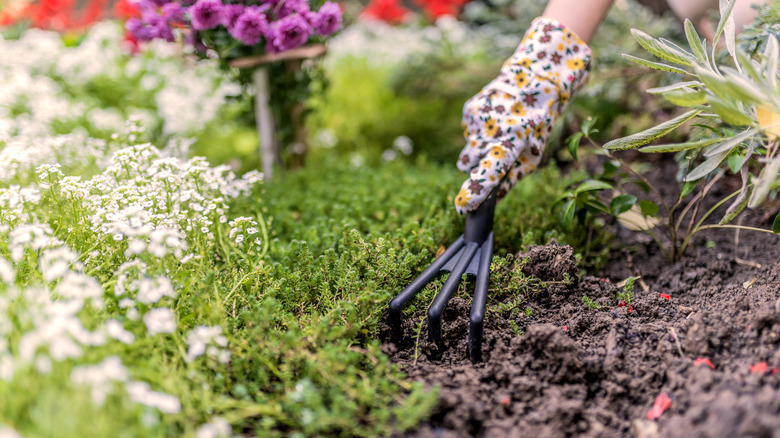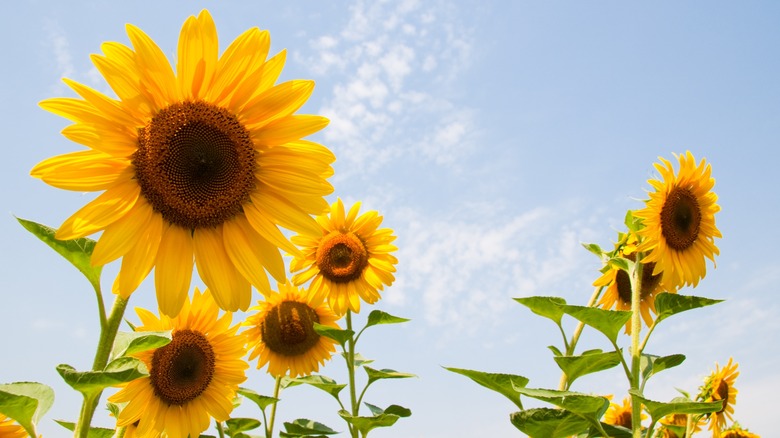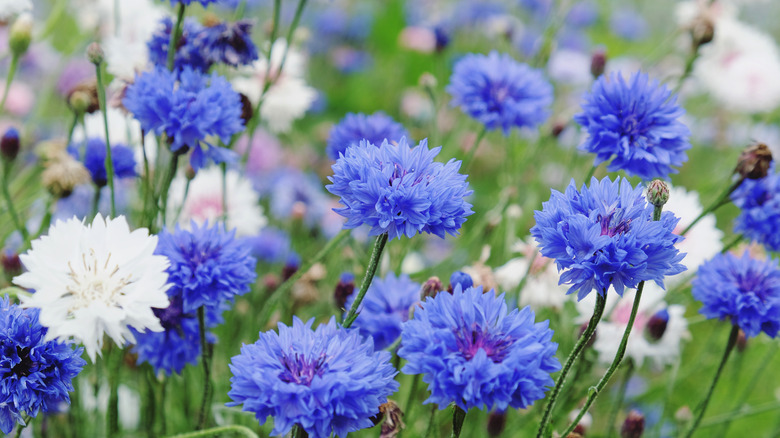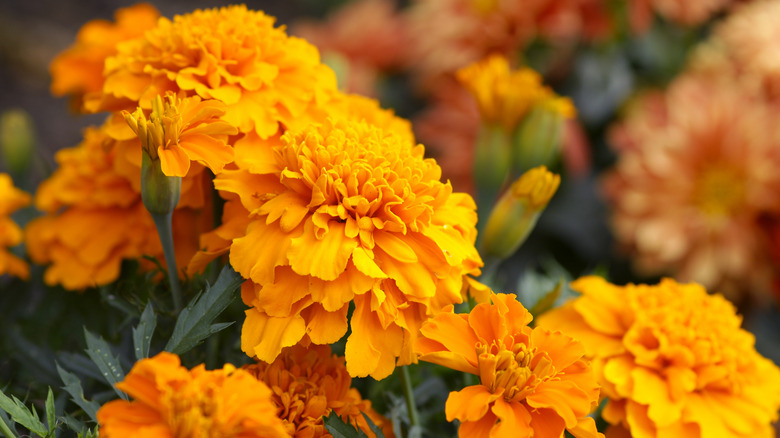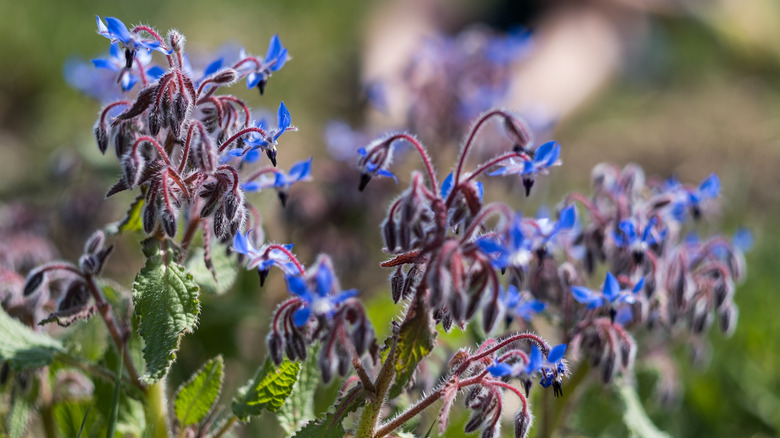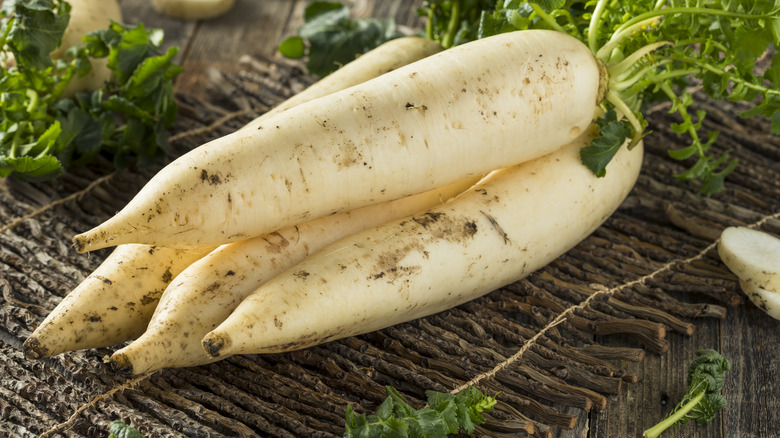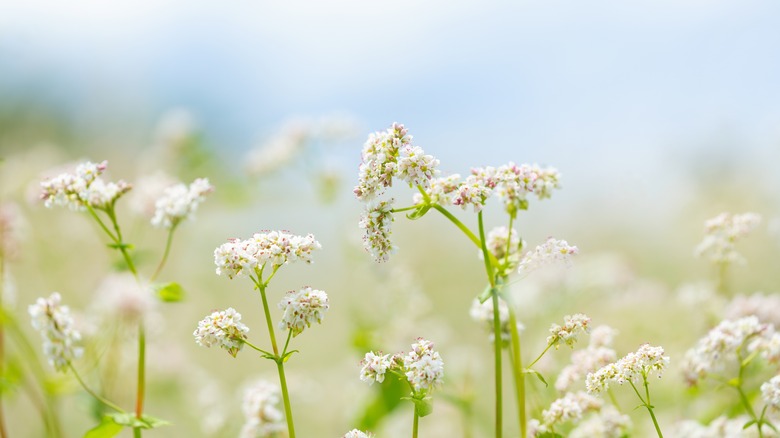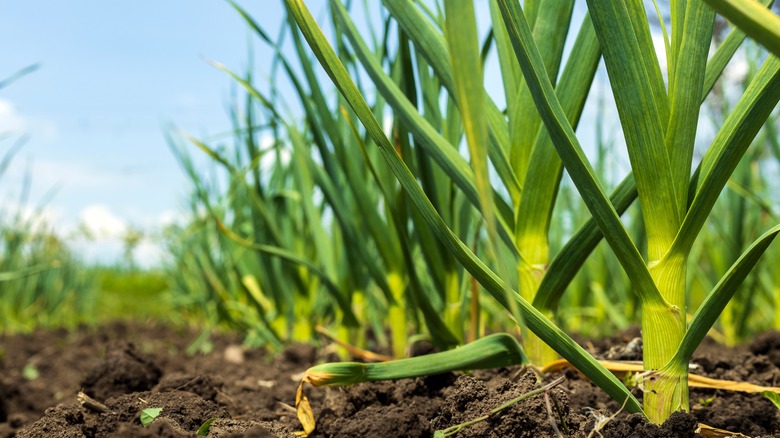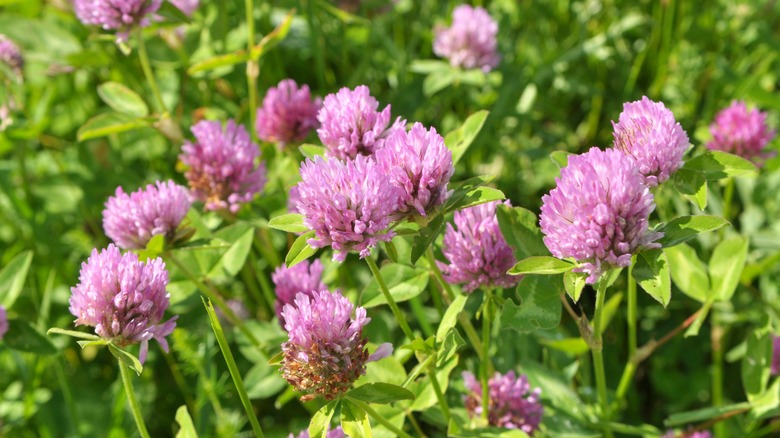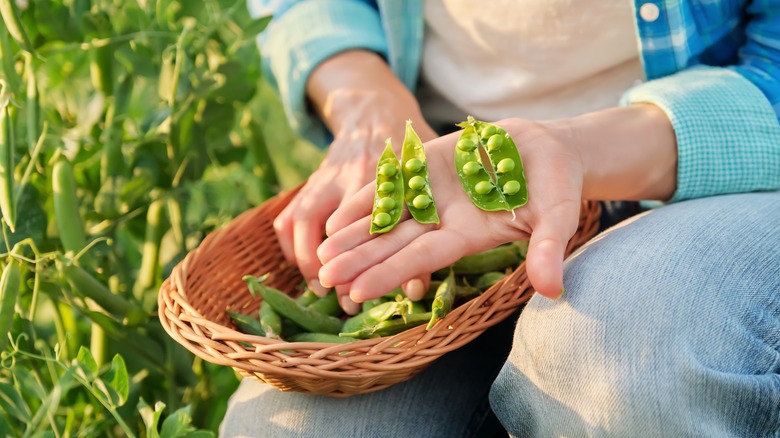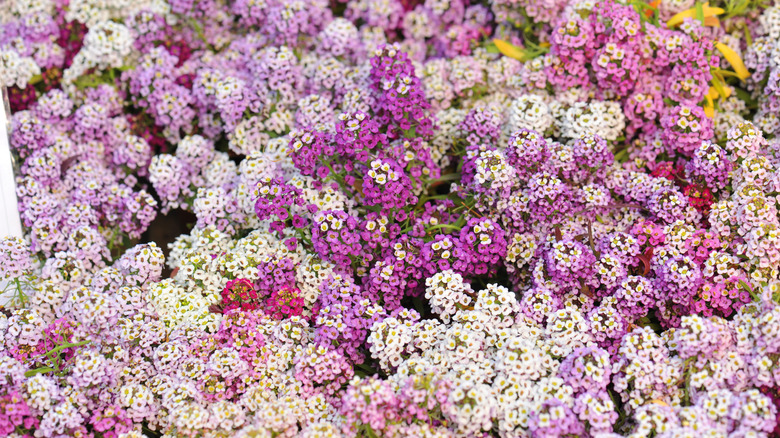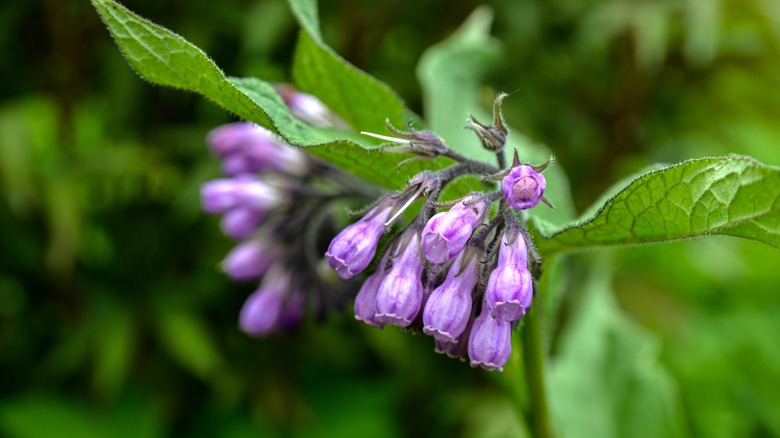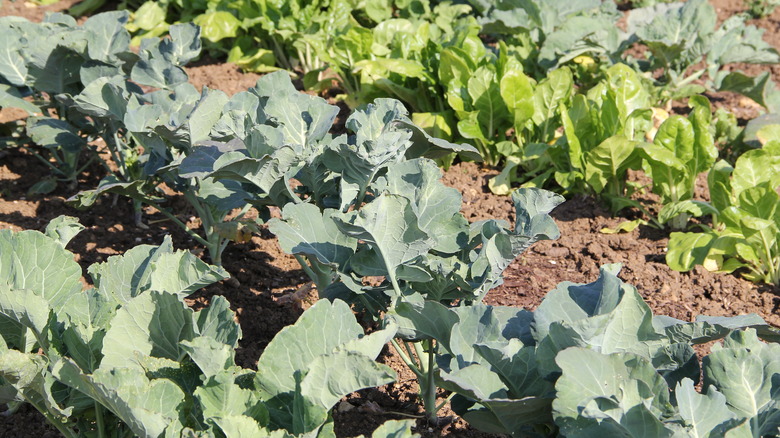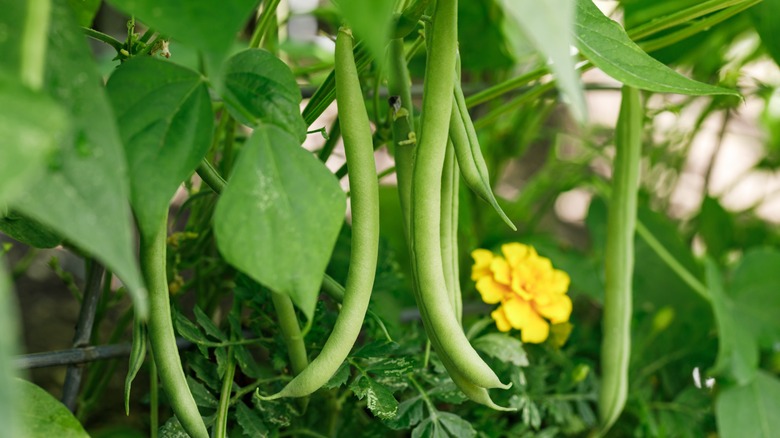13 Plants You Should Have In Your Garden To Naturally Enrich The Soil
Gardeners know: it's all about soil. If you're lucky enough to have naturally rich, well-drained, loamy soil in your garden, growing plants is a breeze as they stay healthy season after season. However, most of us aren't lucky, having rocky, clay, or thin and sandy soil, meaning we must do extra work. Thankfully, many plants can help enrich your soil, and they're easy to grow in your garden.
If you have a vegetable garden, planting a cover crop like grains, clover, or grasses over part of it for a season helps improve the soil's nitrogen content, a crucial factor in soil fertility. Certain vegetables, like brassicas, radishes, and peas, can also improve soil health, but if you're not so into edibles, several annual flowers can be grown from seeds to nourish soil, too. However, they won't release helpful nutrients until they decay and add organic matter to the ground.
Enriching soil isn't just adding vital nutrients but improving overall texture as well. For clay soils, this means improving drainage by reducing compaction. Plants with deep roots, like borage, comfrey, and some radish varieties, help break up dense soil to increase microbes and earthworm activity. For thin, sandy soils, improved texture can be achieved by increasing moisture retention, and adding plants that attract pollinators and other beneficial insects is advantageous in all cases. Regardless of your soil's condition, there's always a plant that can help enrich your soil with nutrients or improve its texture for other plants. Let's explore our options.
Sunflowers
Fields full of sunflowers (Helianthus ssp.) are becoming a more common sight on farmland in many places. The benefits of growing sunflowers en masse are two-fold: they can be a valuable cash crop (harvested for their seeds and soil) and a helpful cover crop that improves soil conditions. Their deep tap root helps with soil compaction and absorbs harmful metals, including lead, arsenic, and zinc. There are many varieties of sunflower to plant that can help improve the soil in your garden.
Bachelor Buttons
What gardener doesn't love this colorful cottage garden annual? Bachelor buttons (Centaurea cyanus), also known as cornflowers, come in many shades of blue, white, pink, and purple. They are considered an easy-to-grow cover crop that not only looks pretty but produces plentiful leaf material that breaks down to help enrich soil. These pollinator magnets are easy to grow from seed (plant in autumn for spring blooms) and reseed themselves over time. Bachelor buttons are a good choice for growing in a wildflower mix or a patch of soil that needs enriching.
Marigolds
Marigolds (Tagetes spp.) are a beloved annual not just for their bright, bold colors and easy maintenance but for their qualities that deter pests. Marigolds are often planted in vegetable gardens, especially as companion plants near tomatoes, because their strong scent deters harmful insects more likely to do damage. The chemicals in marigolds that deter insect pests are also released into the soil to discourage harmful parasitic nematodes (as opposed to helpful nematodes sometimes used in organic gardening). Marigolds also attract many beneficial pollinators, including ladybugs, hoverflies, and lace-wings that eat aphids (a common pest in the vegetable garden).
Borage
Borage (Borago spp.) is an herb-like annual plant with pretty sky-blue flowers that are edible. Like sunflowers, borage has a very deep tap root that acts as a sort of drill to loosen compacted soil. This improves drainage and aerates the soil, increasing the movement of nutrients. Borage self-seeds in the garden, but the small plants can be easily pulled out before they take hold. The plants are drought-resistant and almost maintenance-free. Borage also adds helpful organic matter when the roots of this annual break down at the end of the season.
Daikon radish
Daikon radishes (Raphanus sativus var. longipinnatus) are long white radishes popularly used in Asian cooking, related to turnips and horseradish. These long, firm radishes, growing up to two feet long, break up and aerate compacted soil as they grow downwards. Once removed, the holes left behind help improve earthworm and microbial activity in the loosened soil, which helps improve soil health and texture. The decaying organic matter adds beneficial nitrogen to the soil, breaking down over the dormant winter season to increase soil nutrition for spring planting. Daikon radishes are considered excellent cover crops for improving soil.
Buckwheat
Buckwheat (Fagopyrum esculentum) is known to be a useful crop for rejuvenating soil, especially after it has been depleted of nutrients after being over-farmed. It grows in thin and poor soils, and its roots help to loosen and aerate topsoil. In addition to being a nutritious grain, buckwheat produces flowers that attract many helpful pollinators, including insects that go after aphids and mites, like ladybugs, hoverflies, and tachinid beetles. Buckwheat also absorbs phosphorous that is otherwise unavailable to other plants and releases it into the garden in a more accessible form.
Garlic
Garlic (Allium sativum), a versatile plant used in cooking for its flavor and health benefits, is also advantageous to grow in the garden. The bulbs accumulate sulfur as they mature, and this helps to repel common pests such as aphids, snails, and cabbage loopers, as well as effectively deterring deer and rabbits from destroying the garden. Garlic has strong anti-fungal and anti-bacterial properties and helps alleviate any unhealthy fungus or bacteria in the soil. Garlic is a good companion plant for many vegetables, including tomatoes, carrots, potatoes, beets, peppers, greens, and brassicas.
Red Clover
Red clover (Trifolium pratense) is a great plant to add to your yard if you want a natural lawn that attracts many pollinators and enhances biodiversity. It is known as a "nitrogen-fixing" plant, which means it increases nitrogen levels in soil, especially if allowed to come back each year. It spreads via reseeding, so it's best planted in the lawn or a wildflower meadow, not in flower beds. Red clover flowers also contain compounds with many health benefits and can be dried for several uses.
Peas
Growing peas (Pisum sativum or Lathyrus oleraceus) in the garden is a time-honored tradition for gardeners: this fast-growing, cold-hardy vegetable can be sown in spring while it's still cold and harvested after a few weeks. In addition to being a delicious early-season garden treat, peas are also a good plant for improving garden soil. Like other legumes, peas have the distinct ability to convert atmospheric nitrogen to a form available for other plants to absorb from the soil. This reduces the need for nitrogen fertilizers and makes the soil more rich and fertile.
Alyssum
Alyssum, also known as sweet alyssum (Lobularia maritima), is a pretty annual that produces masses of tiny, fragrant flowers in a range of colors, from white to pale pink, lavender, and purple. It grows easily from seed and forms a low-growing, spreading mass of flowers that blooms for weeks. Alyssum is beneficial to soil and is sometimes called a "living mulch" due to its protective qualities. Its dense mats of flowers shield soil from sunlight, conserving moisture and detering weeds from springing up. This makes alyssum an effective edging plant for flower and vegetable gardens.
Comfrey
Comfrey (Symphytum spp.) is an herbaceous perennial with bell-like flowers in shades of pink or purple. It has long tap roots that reach deep into the soil to loosen and aerate it, improving drainage and water absorption. Comfrey's deep roots can also access soil nutrients that other plants can't reach. By uptaking these nutrients, the flowers releases them into soil when they decay. The plants are reportedly invasive in the Eastern part of the US and can be hard to remove once established, so choose a good spot for your comfrey where you want to improve soil health, away from flower beds.
Brassicas
Brassicas is the name given to a large category of edible plants in the mustard family, including cruciferous vegetables, broccoli, cabbage, cauliflower, kale, turnips, Brussels sprouts, collard greens, and others. These nutritious vegetables are good for soil for two reasons. First, some brassicas, like turnips, produce deep roots that help to loosen compacted heavy soil. Second, vegetables in the brassica family grow quickly, and when planted in spring, their large leaves shade nearby soil and help suppress weeds. Their cold hardiness means they keep growing after frost, providing important nitrogen release to soil late in the season.
Beans
Growing pole or bush bean varieties in your garden can improve soil nutrition and texture. These easy-to-grow spring vegetable plants enhance the nitrogen in the soil, as other legumes do. This means growing beans helps increase organic matter in the soil, making it more fertile, and increases biological activity, encouraging earthworms and helpful microbes. Bush beans grow a bit faster than pole beans and don't require structural support. Be aware that beans do not make good companion plants for onions, garlic, or kohlrabi but are good companions for many other vegetables, including tomatoes, carrots, cabbage, potatoes, and cucumbers.
